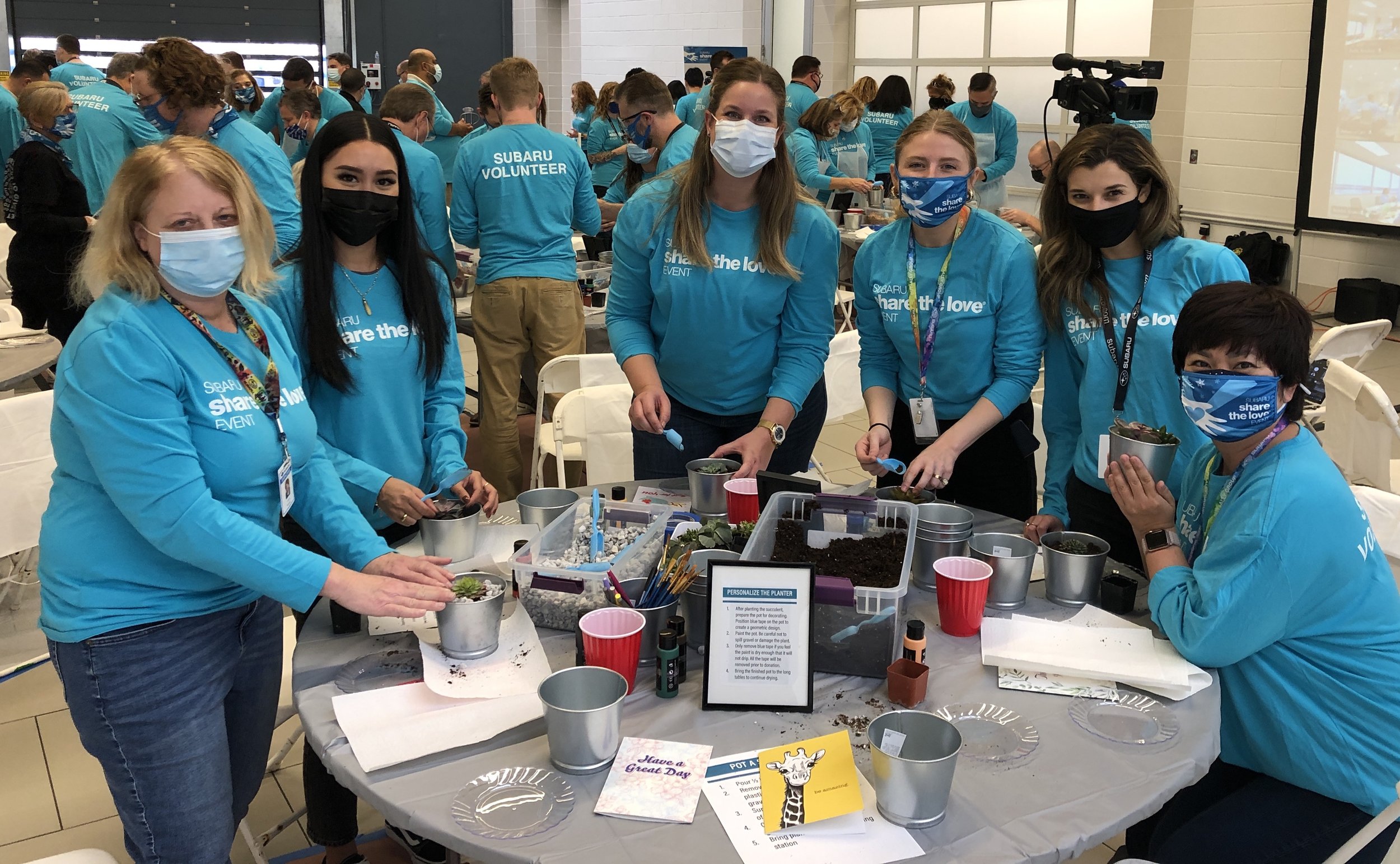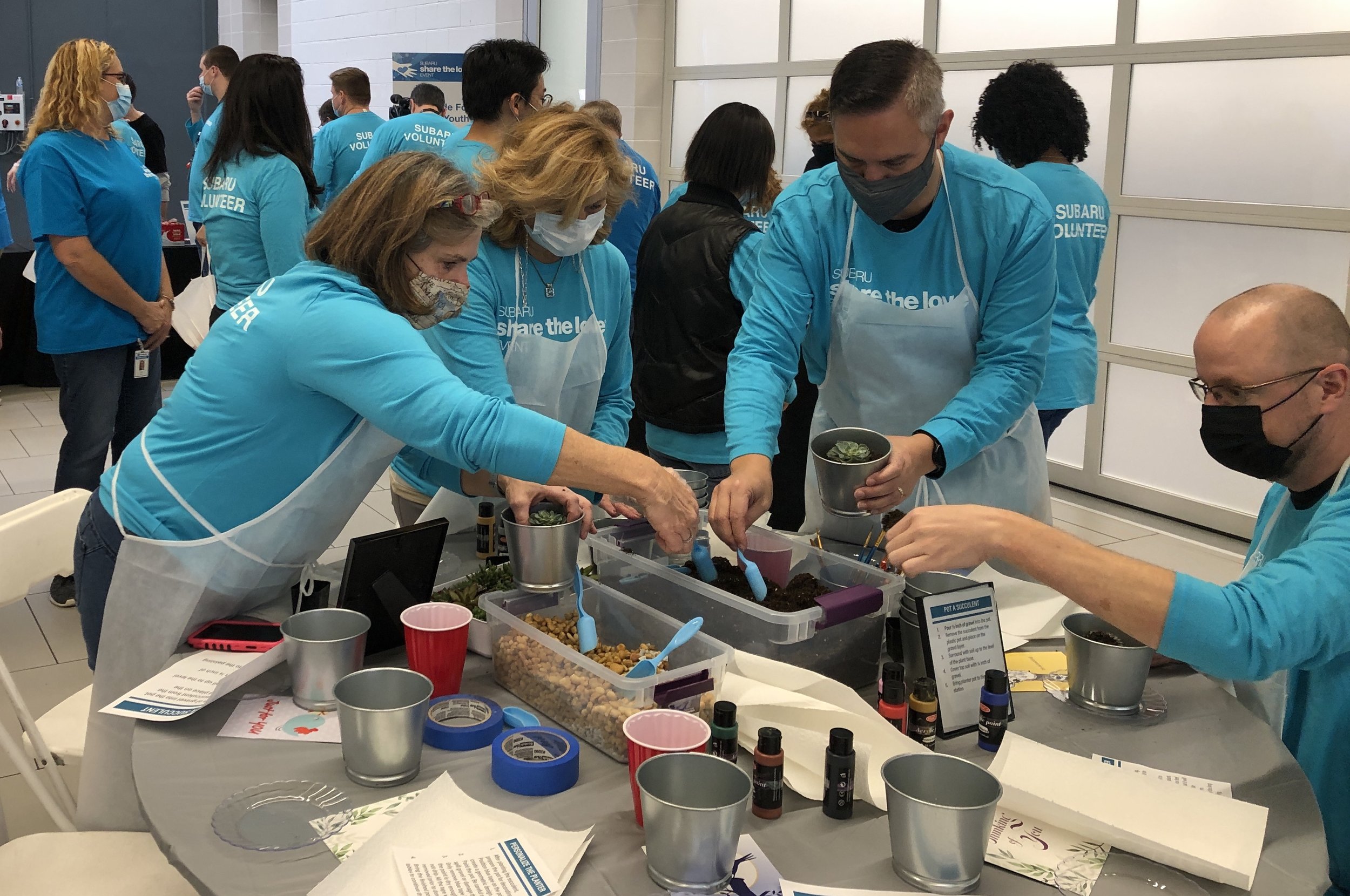What’s Ahead for Employee Volunteering in 2022
Employee volunteers in Camden, New Jersey, were able to take part in several programs that supported pediatric hospital patients, those who are facing food insecurity, seniors, and other issues.
Since the pandemic has begun, interest in social impact is at an all-time high. Technology companies donated laptops and hotspots to assist children who faced the digital divide. Others made monetary donations to food banks or other nonprofits that served those who found themselves underemployed or unemployed.
Recently, though, there has been a push to get employees involved in giving back through volunteer events. However, there are limiting factors like the unknowns around new COVID variants and challenges around returning to work. For those in the social impact space, we have some advice for the next year:
Structure volunteer events carefully. Volunteers have been most comfortable participating in outdoor group activities. They also like being able to choose how they interact with others. Color-coded bracelets or nametags can display a participants’ comfort level with interactions with others. A red bracelet or nametag tells others that the individual would like to avoid close contact whereas a green bracelet or nametag could mean that someone is comfortable shaking hands or exchanging hugs. Some of our clients have also required proof of vaccination and/or a negative COVID test taken either onsite or up to 72 hours before the event.
Tie together multiple events using in-person and remote options. One of our clients, which usually flies 600+ people to their headquarters for their day of service, chose to host their event differently this year. Their headquarters-based employees volunteered in two shifts of 150 people each. We also sent boxes with the supplies needed to assemble donations to their 15 field market teams around the country. These individuals were able to volunteer together in small groups that they were already comfortable with. They then joined each other via video conference. This allowed all volunteers to interact while remaining safe.
Increase planning time. In the past, we would recommend planning volunteer events several weeks in advance. However, with supply chain issues, it’s prudent to plan even further in advance. It’s also important to pay attention to vendors’ cancellation agreements as well as their ability to pivot to ensure your volunteers’ needs are met. For example, if a group of 300 volunteers may need to be broken down into two groups of 150, based on social distancing guidelines.
Give Employee Resource Groups (ERGs) more power. Instead of running all volunteer programs through your Corporate Social Responsibility team, it may be easier to provide budgets for volunteering to your ERGs. This allows individuals to volunteer in small groups that are already aligned with causes they’re passionate about. By providing a budget, individuals can make a massive impact in their community, supporting STEM initiatives, environmental programs, those experiencing homelessness, and more.
Understand nonprofits’ limitations. Throughout the pandemic, nonprofits have been stretched thin, thanks to an increase in the need for their services and a decrease in monetary donations. Many are unable to host large groups at their sites because of COVID regulations, too. One option to is to host virtual or in-person volunteer events at your office and send the donations via mail or asking a team leader to drop them off.
If you need assistance planning your 2022 employee volunteer events, our team can help. Schedule a meeting with them today.



